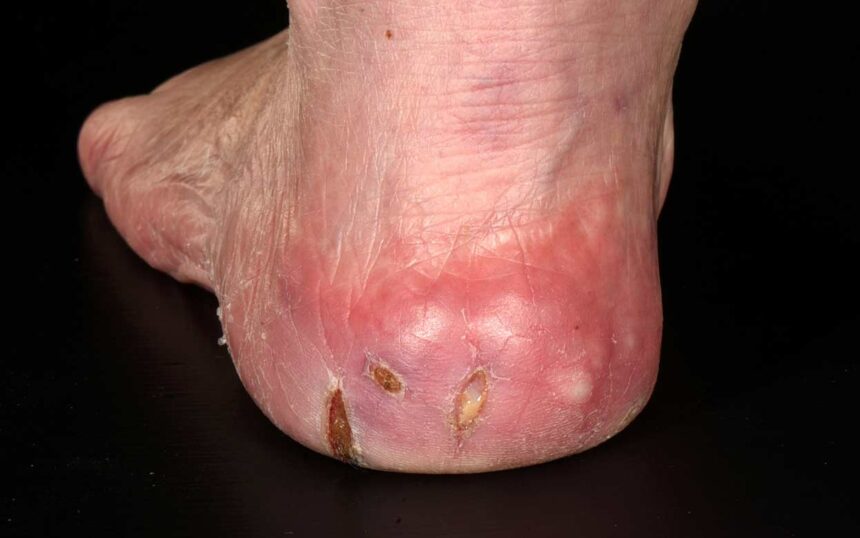Diabetic neuropathic ulcers of the lower extremity represent a significant complication in patients with diabetes, particularly those experiencing severe insulin resistance. These ulcers not only diminish quality of life but also pose substantial risks for morbidity. A thorough understanding of their etiology, clinical manifestations, diagnostic procedures, and treatment modalities is essential for effective management.

Etiology and Pathophysiology
The Interplay Between Neuropathy and Insulin Resistance
Diabetic neuropathy, a common consequence of prolonged hyperglycemia, leads to nerve damage, predominantly affecting the peripheral nerves. This condition manifests as sensory loss, motor dysfunction, and autonomic impairments. Severe insulin resistance exacerbates hyperglycemia, intensifying neuropathic damage and increasing the susceptibility to ulcer formation.
Mechanisms Leading to Ulceration
The development of neuropathic ulcers involves several key factors:
- Sensory Neuropathy: Diminished pain perception allows minor injuries to go unnoticed, preventing timely intervention.
- Motor Neuropathy: Muscle imbalances result in foot deformities, such as hammertoes and claw toes, creating pressure points prone to ulceration.
- Autonomic Neuropathy: Reduced sweating leads to dry, cracked skin, compromising the protective barrier and facilitating ulcer development.
- Peripheral Arterial Disease (PAD): Coexisting PAD impairs blood flow, hindering wound healing and increasing the risk of ulceration.
Clinical Manifestations
Patients with diabetic neuropathic ulcers typically present with:
- Ulcer Characteristics: Painless, well-defined ulcers, often located on pressure points like the metatarsal heads or heels.
- Surrounding Skin Changes: Callus formation around the ulcer, dry and cracked skin due to autonomic dysfunction.
- Foot Deformities: Structural abnormalities such as hammertoes, claw toes, or Charcot foot deformity.
- Infection Signs: In advanced cases, signs of infection like erythema, warmth, swelling, or purulent discharge may be evident.
Diagnostic Evaluation
A comprehensive assessment includes:
- Medical History: Detailed inquiry into diabetes duration, glycemic control, and presence of neuropathic symptoms.
- Physical Examination: Thorough inspection of the feet for ulcers, deformities, and skin changes; assessment of sensory and motor function; evaluation of peripheral pulses.
- Laboratory Tests: Glycated hemoglobin (HbA1c) levels to assess long-term glycemic control; inflammatory markers if infection is suspected.
- Imaging Studies: X-rays to detect bony abnormalities or osteomyelitis; Doppler ultrasound or ankle-brachial index (ABI) measurements to evaluate vascular status.
Management Strategies
Glycemic Control
Achieving optimal blood glucose levels is paramount. Intensive insulin therapy or combination regimens may be necessary to overcome severe insulin resistance. Continuous monitoring and adjustments are essential to prevent further neuropathic damage.
Wound Care
- Debridement: Regular removal of necrotic tissue to promote healing and reduce infection risk.
- Moist Wound Environment: Application of appropriate dressings to maintain moisture balance and protect the wound.
- Offloading: Use of specialized footwear, orthotics, or total contact casting to redistribute pressure away from the ulcer site.
Infection Management
Prompt identification and treatment of infections are critical. Empirical antibiotic therapy should be guided by culture results and adjusted based on clinical response.
Revascularization
In patients with significant PAD, revascularization procedures, such as angioplasty or bypass surgery, may be necessary to restore adequate blood flow and facilitate ulcer healing.
Patient Education
Educating patients on proper foot care, including daily inspections, appropriate footwear selection, and prompt reporting of any foot abnormalities, is vital in preventing ulcer recurrence.
Prognosis and Prevention
Early detection and comprehensive management of diabetic neuropathic ulcers can significantly improve outcomes. Preventive measures, including regular foot examinations and patient education, are essential components of care.